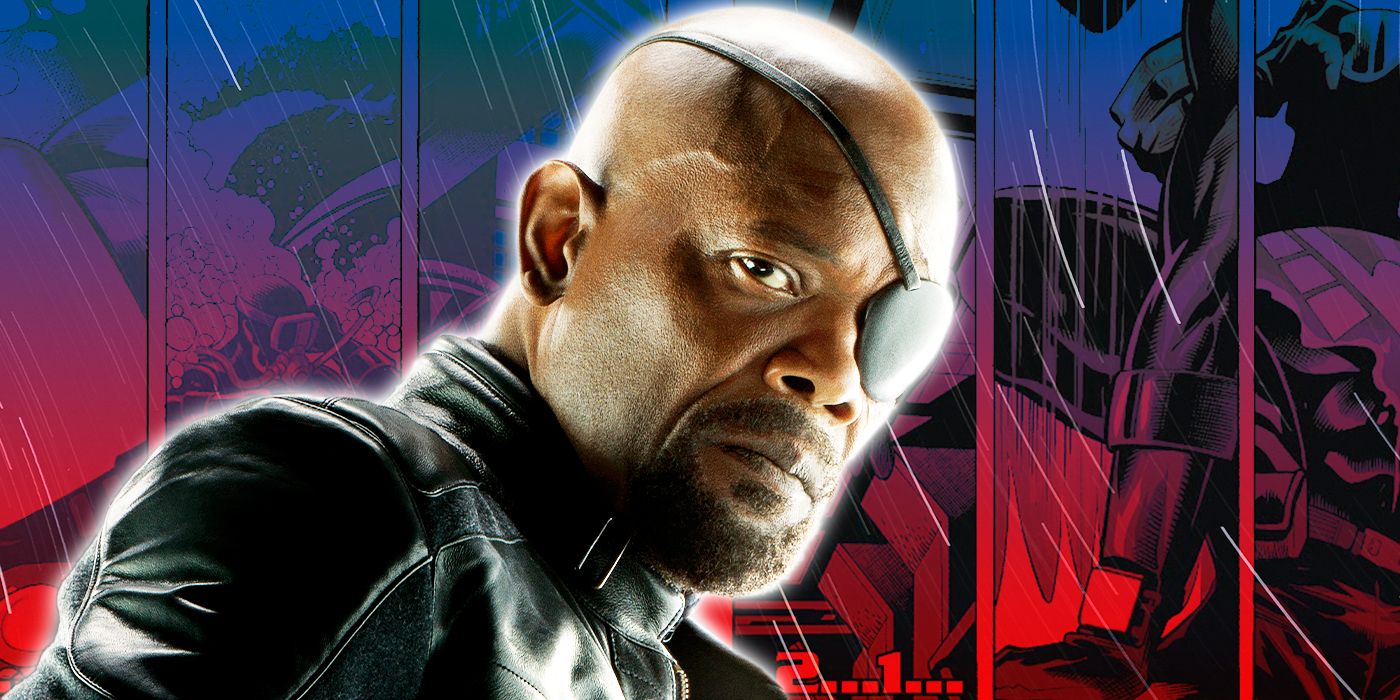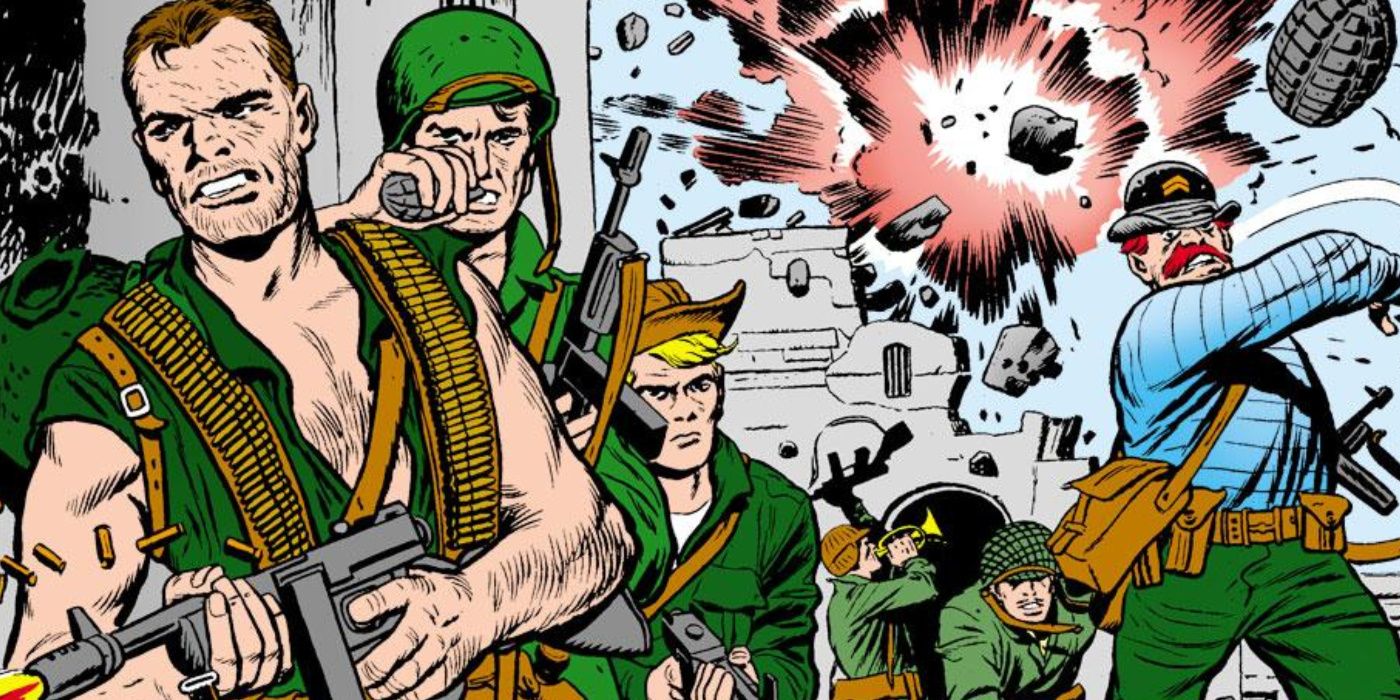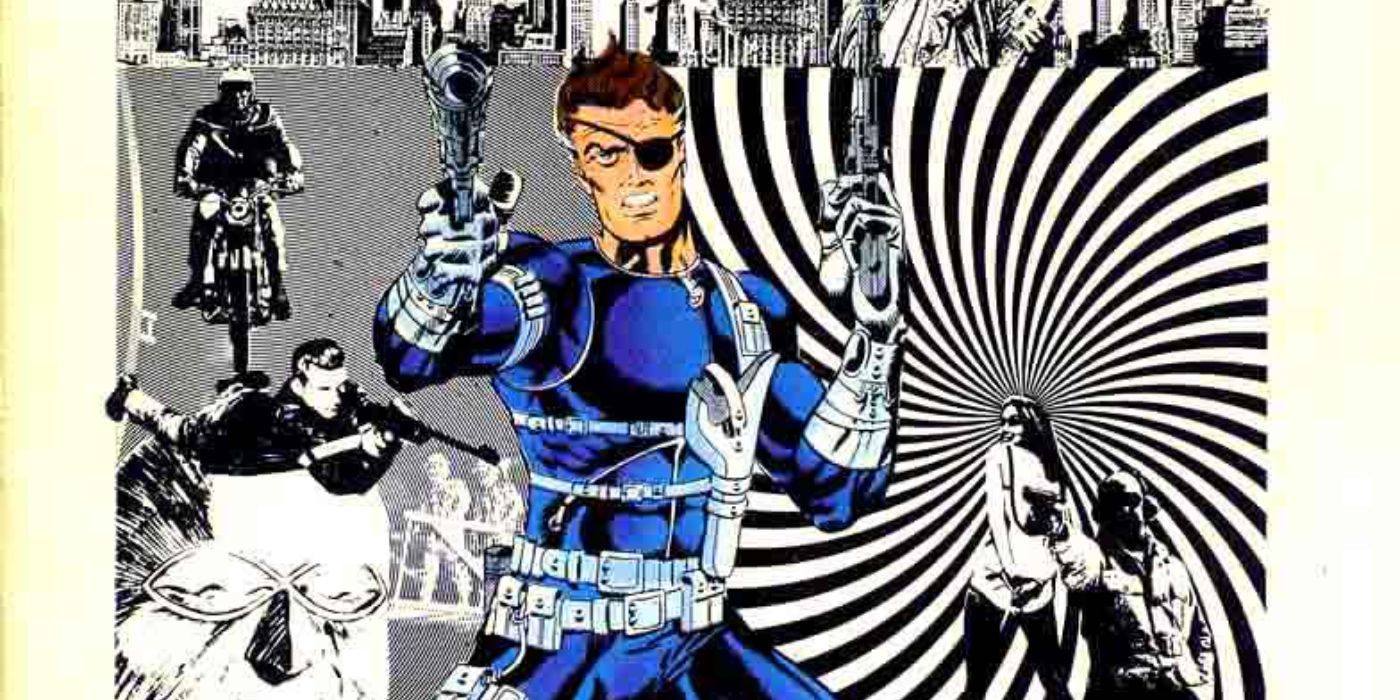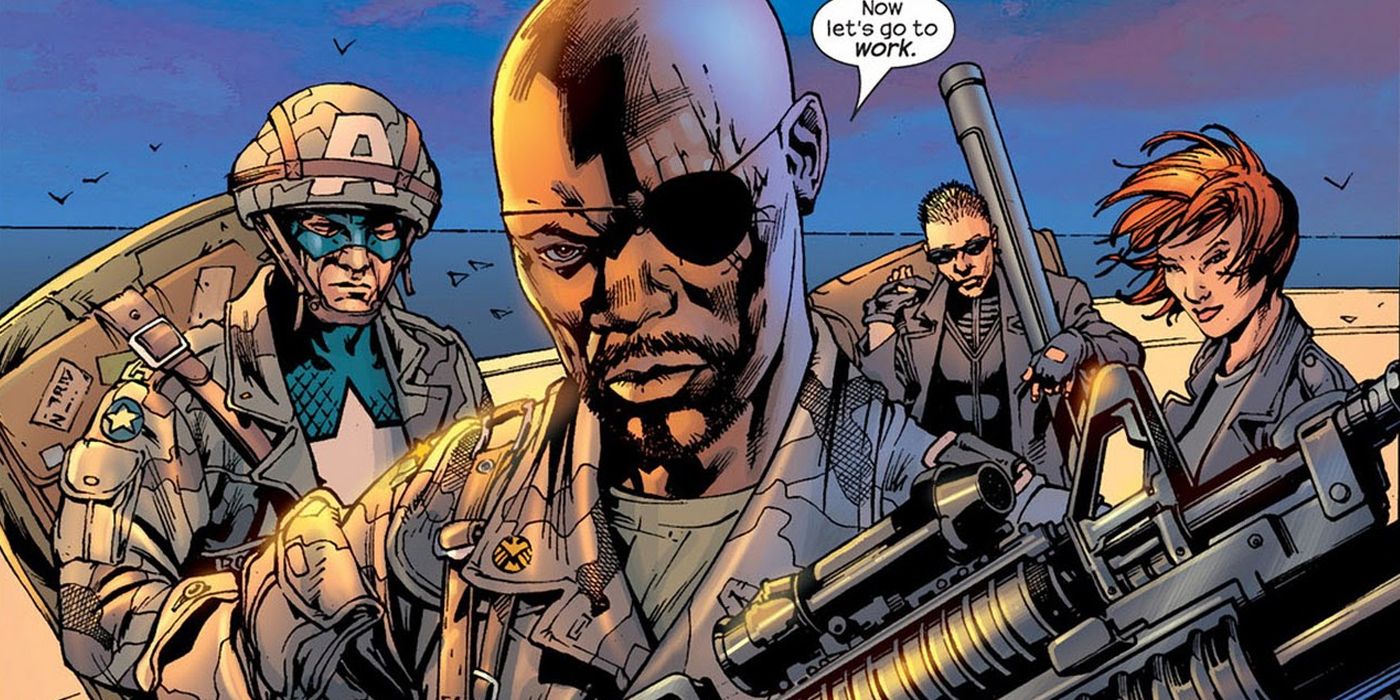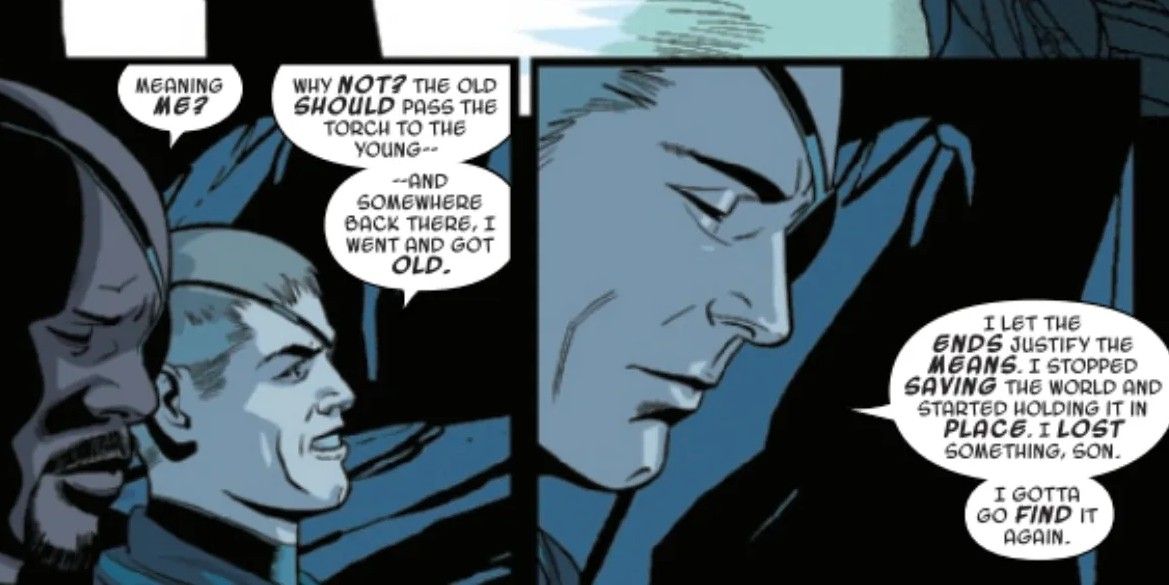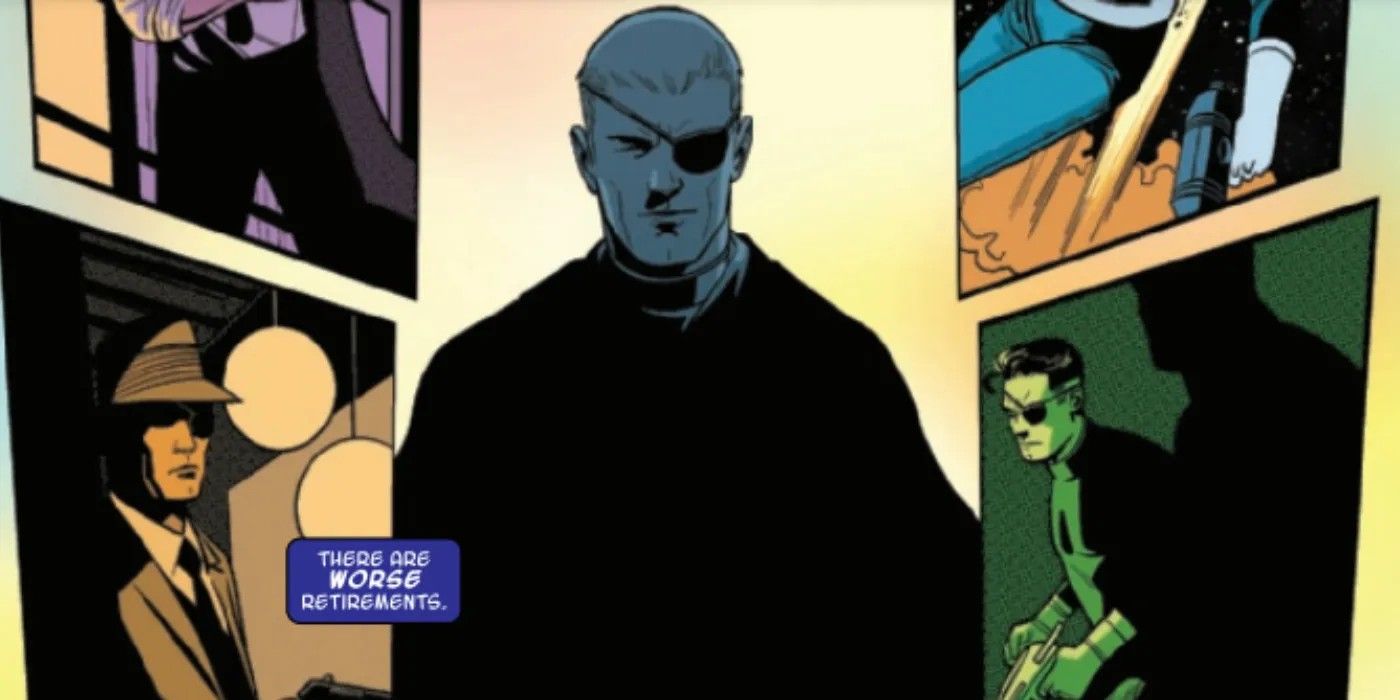Summary
- Fury #1 pays tribute to Nick Fury's storied histor in Marvel Comics, from his debut in Sgt. Fury and His Howling Commandos to his mordern exploits alongside the Avengers.
- Marvel retires the classic Nick Fury in Fury #1, giving him a farewell mission before sending him across the multiverse alongside his son, Nick Fury Jr.
- By giving the original Nick Fury a worthy send-off, Marvel has paved the way for Nick Fury Jr., to step into a more important role in modern comics.
The following contains spoilers for Fury #1, now on sale from Marvel Comics.
The last decade has been an interesting one for Nick Fury. After playing a major role in books like Secret Warriors, Fury went through a series of retcons and reinventions that briefly turned him into a cosmic-level character, losing a lot of what made the character memorable in the first place. Now, it seems like Marvel is officially retiring Nick Fury, and creating a greater spotlight for his successor.
Fury #1 (by Al Ewing, Scot Eaton, Cam Smith, Tom Reilly, Adam Kubert, Ramon Rosanas, Jordie Bellaire, and VC's Joe Caramagna) removes the classic Nick Fury from the core-Marvel Universe, giving the character one last mission alongside his son before sending him across the multiverse. It's a sweet way of saying farewell to the classic version of the character, while affirming the legacy he leaves behind. It also leaves the door open for his potential return, while serving as (at least for now) the final story of the original Nick Fury.
Updated On October 9th, 2023 by David Harth: Nick Fury's legacy in Marvel is very important. His recent departure in Fury #1 did its level best to truly capture the iconic character's impact, and it set his son up for success. The history of both characters is interesting, and it's a story that needs to be told to truly understand why Fury was important and what Nick Fury Jr. is stepping into.
Howling Through Marvel History
Marvel history is quite interesting, especially the Silver Age. Marvel has long been known as the House Of Ideas, and gets a lot of credit for making superheroes popular again in the 1960s. The irony is that they were mostly just copying DC at first. The Fantastic Four, for example, were basically the Challengers of the Unknown with superpowers. This makes a lot of sense because Jack Kirby co-created the Challs, as they are sometimes called, for DC. The general sci-fi tone of the Marvel Universe took inspiration from the early Silver Age DC Universe. Even the Avengers bore strong similarities to the Justice League. Thor was the Superman, down to red and blue being important colors to the character. Hal Jordan and Iron Man boasted cocksure attitudes and the ability to create anything they needed to fight evil. The X-Men are mostly original, but they were also Marvel's biggest failure of the Silver Age. Spider-Man owes a lot to Batman, whose ideas and iconography were used to create the Wall-Crawler.
Nick Fury is a perfect example of Stan Lee's ability to take something that DC did and repackage it. The 1950s weren't a good time for superheroes. DC still published Batman, Superman, and Wonder Woman comics, but the rest of their Golden Age heroes had disappeared. DC diversified its comic output with all kinds of comics, including war ones. Our Army At War debuted in 1952 and took readers back to WWII. However, the book would wait seven years before it got the star that put it on the map: Sgt. Rock. Rock was created by Robert Kanigher and Joe Kubert and would become extremely popular. Rock was the leader of Easy Company, battling the Germans throughout Europe. He and the soldiers of Easy Company became very popular, and DC introduced more WWII based characters. Kubert would become the most prolific creator to work on Sgt. Rock, and Rock helped build Kubert's legend and propelled the artist to superstardom.
Lee and Kirby saw the success Rock and DC's war comics had gained and wanted to get in on the game. Sgt. Fury and His Howling Commandos debuted in 1963. It was basically a reskin of Sgt. Rock and Easy Company. Fury and his troops would go on dangerous missions, battling the Germans. Fury proved popular with readers, and in 1965 he was introduced in the modern day as a colonel and made into a Cold War spy in Strange Tales #135 (by Stan Lee, Jack Kirby, and Dick Ayers). These new Fury stories would introduced SHIELD, the Helicarrier, Life Model Decoys, Hydra, and much of the iconography that fans would associate with Nick Fury in the years ahead. Writer/artist Jim Steranko later took over Fury's strange adventures, his unique art style and page design crafting the spy into a star. Fury left Strange Tales, which became Doctor Strange, and got his own book: Nick Fury, Agent Of SHIELD. The book ran for fifteen issues. After that, Nick Fury began appearing all over the Marvel Universe, and SHIELD became a big part of Marvel.
Nick Fury became a beloved fixture of the Marvel Universe. Sgt. Fury And His Howling Commandos ran until 1981, although it had been in reprints since 1974. Fury got several miniseries and one-shots in the '80s. Then a new volume of Nick Fury, Agent Of SHIELD launched in 1989, running until 1993. This was Fury's last ongoing, but his position in the Marvel Universe as the premiere spymaster kept him appearing throughout the line. Fury was "killed" by Punisher in Double Edge Alpha in 1995. Later, Nick Fury reclaimed his place as Marvel's top spy. Fury received a Marvel MAX series by Garth Ennis and Darick Robertson in 2001 and then 2004-2005's Secret War forced him into hiding when his crimes in Latveria became known. However, elsewhere at Marvel, a new Fury was rising.
Ultimate Rebirth
The Ultimate Universe took the comic industry by storm in the early 2000s. The publishing line's reboot of the Marvel Universe sold like gangbusters and would soon get its own Nick Fury. While everyone knows Ultimate Nick Fury is a Samuel L. Jackson lookalike, he didn't get this design until The Ultimates, where Fury reached the largest audience he had in years. While the Ultimate Universe's precipitous fall affected Ultimate Nick Fury. As a result, 616 Nick Fury reappeared in the main line Marvel books during Secret Invasion. Things took a turn for the better once Samuel L. Jackson played Nick Fury in the 2008 film Iron Man. Fans the world over were introduced to Nick Fury, and the rest became history.
Marvel likes to synergize the comics and the movies, so eventually, a new Nick Fury debuted in the 616 Marvel Universe during the Fear Itself event. After losing his eye and getting facial scars that matched the MCU version, Nick Fury Jr. learned the truth about his father and joined SHIELD, working with a comic debuting Agent Coulson. This marked the first major example of Marvel synergy, and it wasn't a wild success. Fury Jr. and Coulson started appearing all over the Marvel Universe. Soon, Fury Jr. took his father's place in every way that counted. Eventually, Fury was put to pasture during Original Sin. Readers learned that beyond being Director of SHIELD and a WWII vet, Nick Fury was also the Man on the Wall, whose entire job was to kill every extraterrestrial and interdimensional threat before it reached Earth. This felt like a bit of a waste, since Marvel suddenly made him way more interesting and then wrote him out, passing the Man on the Wall mantle to Winter Soldier.
Nick Fury killed the Watcher during Original Sin, and when the Avengers found out, there was a massive battle. Fury made Thor question his worthiness, leading to Jane Foster's tenure as Thor. Then Fury became the Unseen. Fury took the Watcher's place and spent years on the moon, living up to his new name. Meanwhile, Nick Fury Jr. was all around the Marvel Universe, appearing in Wolverine Vols. 5 and 6, and in many other books. All of this led to 2023's Fury.
Nick Fury's Final Marvel Mission
Much of Fury #1 focused on the mysterious machinations of a new version of S.C.O.R.P.I.O., who is after the Zodiac Key. Proving to be a capable enough operator to keep up with Nick Fury Jr., her mission ends up bringing her to the Blue Area of the Moon, where she confronts the original Nick Fury. But Nick's been watching her for a while, and Nick Fury Jr's. arrival turns the tides against the wildcard. She's ultimately forced to retreat without the Zodiac Key. As the dust settles, the two Furys end up taking the time to have a discussion about their relationship and their place in the Marvel Universe.
The elder Fury reveals that he's tired of "playing chess" with the world, as his duties as spymaster have forced him to make too many morally bankrupt decisions in the name of global security. Taking the Zodiac Key to keep it out of the wrong hands, Nick has elected instead to leave once and for all and travel the multiverse. While on this "vacation," he can help other timelines and do good again instead of just maintaining the status quo in the core-Marvel Universe. In his stead, he leaves all his resources and intel to his son, along with his mission to protect Earth-616. After an embrace, the original Nick Fury heads off into the unknown one more time, with his son commenting that he believes they'll see each other again someday. It's a sweet moment that feels like the closing of a chapter in the Marvel Universe, even if it leaves room for future stories.
Marvel Bids Farewell to the Original Nick Fury
Debuting in 1963's Sgt. Fury and his Howling Commandos #1, Nick Fury is one of Marvel's oldest heroes. The spymaster has been a major part of the Marvel Universe for decades, and no one ever succeeded in killing him. However, Nick Fury's biggest exposure outside of comics might have been the key to his eventual disappearance. The Marvel Cinematic Universe reimagined Nick Fury more in-line with his Ultimate Universe variant, and the core-comics followed suit by introducing Nick's son. While this character stepped into a more important role in modern Marvel Comics, the original Nick was forced onto the sidelines by events like Original Sin, Exiles, and "The Reckoning War" storyline.
Fury #1 does something similar, moving the original Nick off the board for the time being (while overtly setting up his potential return sometime in the future). But there's a greater sense of tribute in the story, which highlights previous eras of the original character juxtaposed against his son's modern adventures. Nick's old adventures are highlighted in "family history" that Nick Jr. reads, and he gets to have agency in his departure. Nick Fury is a vital character to the history of the Marvel Universe, and Fury #1 feels like the best way to bid farewell to the character as he used to exist. It also leaves the door open for the younger Nick Fury to become the only Nick in the Marvel Universe, simplifying his role in any given story and letting him fully step out of his father's shadow. It's a sweet way to bid farewell to a classic character while keeping eyes geared towards the future.

